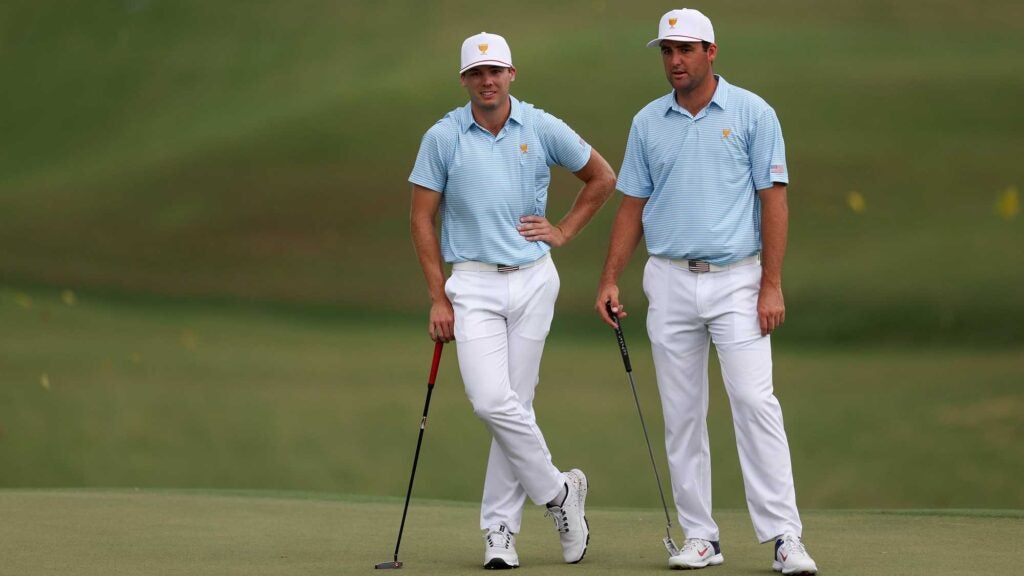You needn’t be a rules maven to know this basic tenet of the game: the golfer farthest from the hole plays first.
So, when Si Woo Kim found himself sizing up a wedge shot from 87 yards in his opening foursomes match at the Presidents Cup Thursday, and all his opponent, Scottie Scheffler, had left was a 74-foot putt for eagle, you’d be excused for thinking that Kim was away.
Excused, but still wrong, and here’s why.
Kim, who was playing alongside Cam Davis for the Internationals, hit the team’s tee shot on the par-5 7th. He found the fairway, leaving Davis about 190 yards to the hole over a water hazard fronting the green. Davis carried the obstacle, but not by enough. His ball bounced back into the drink. Meanwhile, Scheffler’s partner, Sam Burns, had already left Scheffler safely aboard with a lengthy putt for eagle.
With no room to drop by the green without getting closer to the hole, Kim was forced to drop on the far side of the hazard, nearly 90 yards from his target.
Order of play is especially meaningful in match play given the result of your opponent’s shots can influence how you play your own. So, it was surprising to see Scheffler, who was so much closer to the hole, play first.
What gives?
Enter PGA Tour rules official Mark Dusabek, who joined the broadcast to enlighten the golf-viewing masses. Because the International team’s ball had crossed on the far side of the hazard — and nearer the hole than where the Americans’ approach shot had come to rest — the Internationals’ ball was still deemed to be closer to the hole, even though it had disappeared into the water, Dusabek said
“His ball is actually closer to the hole from where his ball went into the water, where his ball laid in the water, versus where the [U.S. team’s] ball was up on the green,” Dusabek said.
Dan Hicks, who was calling the event for NBC/Golf Channel, said to his perplexed partner Paul Azinger, “I just heard a lot of people what you said, Zing: ‘Ohhhhh…’”
Said Azinger, “It makes sense now.”
Kim hit a nifty wedge shot to 5 feet from where Davis saved par, but it wasn’t enough to match Scheffler and Burns’ birdie, who seized a 3-up lead and seemed destined to put another point on the board for the Americans.
“I think I was playing a little nervous — not so much scared, just a little nervous golf,” Davis said later. “And when I hit the ball in the water on 7, I was like, that’s the last time I’m trying to hit a smooth shot when I’m nervous. It’s a pumped-up nervous so everything is going a little further. It’s kind of hard sometimes to hit a ball over water with a club that would normally not make it over the water. So I think that finally clicked in my head. Right, we’ve just got to play aggressive. We’ve got to hit it hard. If you’re stuck between clubs, go the shorter one.”
The change in strategy worked. Kim and Davis clawed back to even the match through 16 holes, before winning 17 and 18 for a gutty 2-up win and much-needed point for the Internationals.
“We feed off each other really well,” Davis added. “I think we’ve got the same approach to the game, just about, in terms of I ask him what he thinks, it matches pretty much what I’m thinking, which is a pretty easy way to think our way around the golf course. Obviously, it worked great today.”
